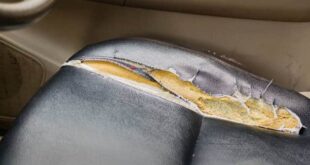Coolant System Repair: A Guide to Keeping Your Engine Cool. A well-functioning coolant system is crucial for your car’s engine health. This system prevents overheating, ensuring your vehicle runs smoothly even in extreme temperatures. Understanding the ins and outs of coolant system repair can save you from costly repairs and potential engine damage. In this article, we will dive deep into everything you need to know about coolant system repair, including common issues, maintenance tips, and frequently asked questions.
What is a Coolant System?
The coolant system in your vehicle is responsible for regulating the engine’s temperature. It circulates a mixture of antifreeze and water through the engine, absorbing heat and dissipating it through the radiator. This process prevents the engine from overheating and ensures optimal performance.
Common Coolant System Issues
- Leaks: Coolant leaks are a common issue that can lead to a low coolant level and engine overheating. Leaks can occur in hoses, the radiator, or the water pump.
- Clogs: Over time, debris and rust can accumulate in the coolant system, causing clogs that restrict the flow of coolant.
- Faulty Thermostat: The thermostat regulates the flow of coolant. A faulty thermostat can stick open or closed, causing temperature regulation issues.
- Radiator Problems: A damaged or clogged radiator can prevent proper heat dissipation, leading to overheating.
- Water Pump Failure: The water pump is responsible for circulating coolant through the system. If it fails, coolant won’t flow properly, causing overheating.
Steps to Repair the Coolant System
1. Diagnosing the Problem
The first step in coolant system repair is diagnosing the issue. Check for visible leaks, listen for unusual noises, and monitor the engine temperature gauge. Use a pressure tester to identify leaks and inspect the radiator and hoses for signs of wear or damage.
2. Fixing Leaks
If you identify a leak, the next step is to fix it. Depending on the location, this may involve replacing hoses, the radiator, or the water pump. Use a high-quality sealant for minor leaks, but remember that this is only a temporary fix.
3. Flushing the Coolant System
Flushing the coolant system removes debris and rust that can cause clogs. Drain the old coolant, fill the system with a flushing solution, and run the engine for the recommended time. After flushing, drain the system again and refill it with a fresh mixture of antifreeze and water.
4. Replacing the Thermostat
If the thermostat is faulty, replace it with a new one. This involves draining some coolant, removing the old thermostat, and installing the new one. Ensure the new thermostat is compatible with your vehicle.
5. Radiator Repair or Replacement
A damaged radiator may need to be repaired or replaced. For minor damage, you can use a radiator repair kit. For more severe issues, replacing the radiator is the best option.
6. Water Pump Replacement
Replacing a faulty water pump involves draining the coolant, removing the old pump, and installing a new one. Ensure all connections are secure to prevent leaks.
Preventative Maintenance Tips
- Regular Inspections: Inspect the coolant system regularly for signs of leaks or damage.
- Coolant Level Check: Check the coolant level monthly and top up if necessary.
- Use the Right Coolant: Always use the coolant type recommended by your vehicle manufacturer.
- Flush the System: Flush the coolant system every 2-3 years to remove debris and rust.
- Check Hoses: Inspect hoses for cracks or wear and replace them as needed.
- Monitor the Thermostat: Replace the thermostat if you notice irregular engine temperatures.
- Radiator Maintenance: Keep the radiator clean and free of debris.
- Water Pump Inspection: Check the water pump for leaks or unusual noises.
- Temperature Gauge: Monitor the engine temperature gauge regularly.
- Professional Check-Up: Have a professional inspect the coolant system during regular vehicle maintenance.
FAQs About Coolant System Repair
- How often should I check my coolant level? Check your coolant level at least once a month.
- What are the signs of a coolant leak? Signs include low coolant levels, puddles under your car, and engine overheating.
- Can I use water instead of coolant? Only in emergencies. Coolant has additives that prevent corrosion and boiling.
- How do I know if my thermostat is faulty? Symptoms include irregular engine temperatures and overheating.
- Is it safe to drive with a leaking radiator? No, it can lead to engine overheating and severe damage.
- How often should I flush my coolant system? Every 2-3 years or as recommended by your vehicle manufacturer.
- Can I repair a leaking radiator myself? Minor leaks can be fixed with a repair kit, but severe damage requires professional repair or replacement.
- What type of coolant should I use? Use the coolant type recommended in your vehicle’s manual.
- What causes a water pump to fail? Causes include wear and tear, corrosion, and seal failure.
- Can a clogged radiator be fixed? Yes, by flushing the system or using a radiator cleaner. Severe clogs may require a radiator replacement.
Conclusion
Maintaining your vehicle’s coolant system is crucial for preventing engine overheating and ensuring optimal performance. By understanding common issues, performing regular maintenance, and addressing problems promptly, you can keep your engine cool and avoid costly repairs. Regular inspections, using the correct coolant, and timely repairs are key to a well-functioning coolant system.
Taking care of your vehicle’s coolant system not only extends the life of your engine but also ensures a smoother and safer driving experience. Whether you’re dealing with leaks, clogs, or a faulty thermostat, understanding how to diagnose and fix these issues will help you maintain your car’s health and performance. Remember, preventative maintenance is always better than dealing with unexpected breakdowns on the road.
 oto car insurance used car repair
oto car insurance used car repair
